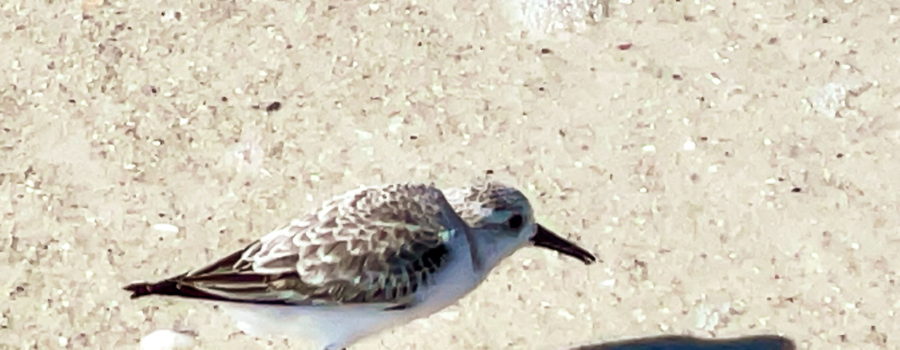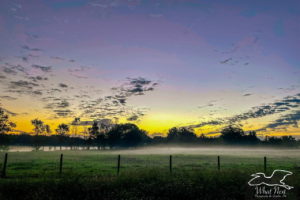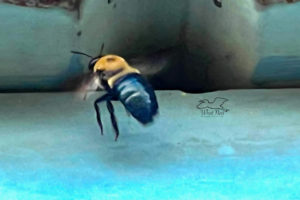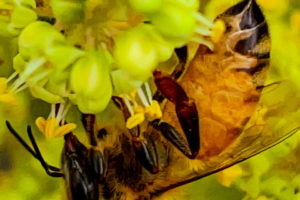It’s Incredibly Interesting to Watch the Sanderlings Feed on the Beach

Back in December I made my first road trip in quite awhile and headed down to St. Petersburg to visit some friends. One of the things we had to do was head out to the beach for some great fresh salt air and some bird watching. As usual there were quite a few gulls around including laughing gulls and lesser black backed gulls. There were also some brown pelicans, and one was nice enough to put on quite a show of diving for us. There were also a number of much smaller, grey and white birds out there running crazily up and down the beach and following the waves in and out. As we sat quietly in our lawn chairs, I was very impressed with their energy levels! These adorable, energetic little birds were sanderlings (Calidris alba), and they are well known for their dynamic feeding behavior. This time of the year they feed mainly on small crabs, marine worms, and small isopods, which are marine insects. These creatures live in burrows in the sand that can be fairly deep. When the waves come in they rush to the surface to feed on plankton and other microscopic organisms. As the wave retreats, they go back down. The sanderling races behind the wave, probing the ground in search of these prey items, and then running back up to the dry sand as the next wave comes in. This feeding behavior gives sanderlings two advantages. First, the animals are closer to the top just after a wave retreats, and the sand is softer, so they can probe more deeply. As we sat watching them, it didn’t seemed like a very energy efficient system, but it seems to work well for the sanderlings, and I do have to say that none of them looked at all thin.

Sanderlings are actually pretty cool little birds for several reasons besides just their interesting feeding behavior. For one thing, they are one of the most migratory birds in the world, making biyearly trips of anywhere between 3000 and 10,000 miles each way! During the summer months, sanderlings breed in the High Arctic tundra of North America, Iceland, Greenland, Europe, and Asia. They breed in colonies, and the same individuals return to the same areas year after year. Most sanderlings are monogamous during any given breeding year, but they do not pair for life. Some females, however, will breed with two males. The female builds a small nesting site which isn’t much more than a scratch in the tundra. She lines it with leaves, grass, and feathers and lays three to four eggs. Both parents incubate the eggs, but one or both protect and monitor the young. The chicks leave the nest within a few days of hatching, and are capable of feeding themselves at that time, but are unable to fly for about two weeks. In the breeding colonies they feed mainly on berries and terrestrial insects including flies, mosquitoes, and beetles. They will also eat algae and leaves if available. The adult birds head south for the winter usually in middle to late summer with those that migrate the furthest leaving first.

During the winter months sanderlings can be found on sandy beaches in temperate and tropical regions nearly worldwide. Their winter range is one of the most extensive of all bird species, but interestingly, even being so widely distributed, there are only two subspecies. One of those subspecies breeds in Greenland, Northern Europe, and Western Asia, while the other breeds in Eastern Siberia, Alaska, and northern Canada. The northern migration usually starts in March, but many young birds will stay on the southern beaches for the year, since they don’t begin to breed until their second year. The migration is usually accomplished in a series of several long flights between stop over sights. Those stop over sights are the same year after year, and oil spills, pollution, and development in these areas are one of the greatest threats to this species, the other being loss of nesting habitat with global warming.

Getting out to a real beach again was part of the reason I had such a great time on that trip (we also did some other fun stuff, and just seeing old friends is always great!), and watching the sanderlings race around was definitely part of the fun. Several of the sources I looked at when doing my research on these little birds suggested that they look like wind up toys running about, and I have to say that I can definitely see that. I think that sometimes we could all take a lesson from their industrious and focused conduct!

‘ Do you like beautiful nature photography and nature inspired artwork? Do you like interesting and informative nature and animal related content? If so, this blog is for you! Subscribe below and never miss an episode!





Recent Comments